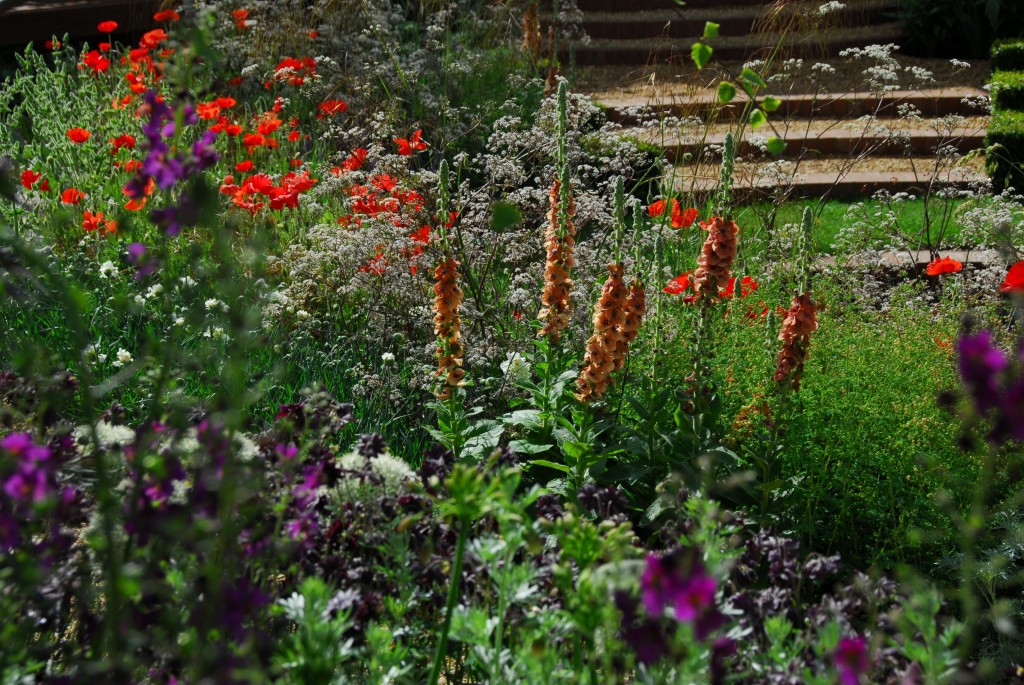Some time in the next couple of weeks – if these berserk winds don’t blow it over first – I’ll flower, for the first time, the very proud and stately Verbascum splendidum. The build up has been richly satisfying itself, with the huge silver rosette bolting up to a great flower stem surrounded by wide clasping leaves with an elegant caudate tip that overlap like pointed titanium scales.
It must be nearly thirty years since my first encounter with Verbascum, in the form of a very impressive rosette of the horribly weedy species, Verbascum thapsus. The rosette was too good to remove (though once you’ve seen much better species like the silvers below, you realise its a pretty dingy yellow-grey), but when it became clear that there weren’t going to be any flowers worth looking at, it came out before it could set any seed. I later saw it dotted all over the land surrounding the Snowy River – it send shudders..
I don’t remember what came next in my verbascum history – probably the perennial Verbascum chiaxii ‘Album’, which is a lovely thing as long as you can discipline yourself to dead-head it before it produces too much seed. It’s white, as the name suggests, and only 1 – 1.5m tall.
Then came years of growing some of the smaller ones from seed, like Verbascum phoeniceum, mostly in purple shades, and making lame attempts to select the best of the resultant colours. You simply can’t be half-hearted about that sort of breeding and selection. Either you do it properly, or don’t to it at all. Once I grasped that, I opted for the latter. About that time the garden world and I developed a short-lived fixation on those biscuit/caramel coloured forms like V. ‘Helen Johnson’. Helen was everywhere for a bit, but I don’t know if anyone’s growing her now. Any short-lived perennial plant that relies on root cuttings to be kept going is sure to encounter popularity struggles in the Aussie market. The same fate seemed to haunt other fabulously desirable forms like the lemon-yellow V. ‘Gainsborough’.

Then came the two great silvers – Verbascum bombyciferum and V. olympicum. The former is more impressively silver, but the latter more impressive in flower. I wish I had reliable access to both. Unlike the named forms in the para above, these can be grown from seed, but I wouldn’t know where to get either of them now.

Then out of the blue came another of the stately silvers. David Glenn started growing V. splendidum, and did a splendid job of showing it off in his excellent DVD series (you can check out his website here). I bought a plant a couple of years ago, and it sat sulking in a pot for the first summer. Like many monocarpic plants (that flower after a year or two, set seed and then die), if it’s starved or neglected it’ll simply delay flowering until conditions prove more favourable. Mine was planted out the following spring and spent all that summer building into a massive furry cabbage. It has now about 1.8m tall, but will go taller yet before its first flowers open.
Wish I had about a dozen of them…
(And btw, he’s not currently listing it)
I love the way you say “I’ll flower, for the first time, the very proud and stately Verbascum splendidum.” Ha! You have given yourself away. I always suspected there was secret hocus pocus in your extraordinary gardening ability.